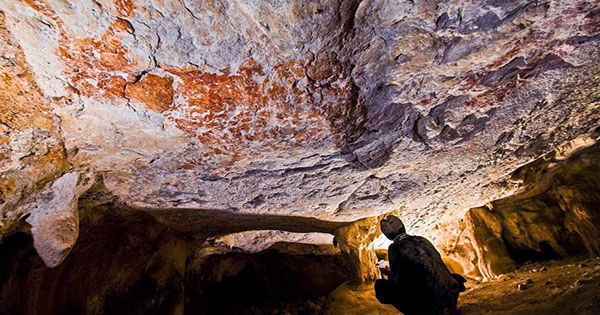It’s hardly surprise that Cueva de Ardales, one of Europe’s richest rock art sites, contains so many works; the locals had plenty of time to practice. According to fresh data, the cave in southern Spain has been a safe haven for Neanderthals and modern people for at least 50,000 years. Paint on the walls of Cueva de Ardales has already been dated to 65,000 years ago, making it the world’s oldest cave art. The cave’s archaeological investigation, published in PLOS One, doesn’t go back that far, but it does uncover charcoal from more than 58,000 years ago. Any human residents of Europe at the time were Neanderthals.
Modern people are considered to have arrived in the area just approximately 30,000 years ago, but the dig also turned up plenty of remnants from other periods. Modern humans utilized the cave as a burial ground until the Copper Age approximately 7,000 years ago, in addition to continuing to paint the walls. This was not, however, a matter of homes replacing caves as a source of protection from the weather. Instead, the authors of the article, led by Dr. Jose Ramos-Muoz of the University of Cadiz, suggest that the Cueva de Ardales “Was not a campground, but was mostly frequented to carry out non-domestic chores, such as the fabrication of rock art or the burial of the dead,” according to their findings.
As a result, it has a lot of symbolic importance and is one of the greatest places to study prehistoric European civilization. People camped close near a spring, according to tools discovered there. The walls of Cueva de Ardales are home to almost 1,000 paintings and engravings. Near the entryway, the earliest are largely abstract red finger markings and hand stencils, while the inside includes more modern paintings and animal engravings.
Although it is difficult to date the paintings with certainty, uranium/thorium research of paint flecks has indicated that some were created during Neanderthal times. Seven years of digging around the cave’s entrance has unearthed a slew of artifacts whose ages may be deduced from the sedimentary strata in which they are found.
The site had a lot of charcoal, and the dig turned up a lot of bones and teeth, including a 12-year-old boy’s jaw and pottery fragments. Other bones show the animals that were eaten, either for sustenance or as religious sacrifices, in the area. Some of the tools discovered in the cave appear to be handcrafted there. The cave’s old entrance was shut by a landslide somewhere in the previous 4,000 years, and it was assumed to remain unvisited until its rediscovery in 1821. Some of the charcoal, on the other hand, is from the 16th or 17th centuries.
Humans visited the cave in the few centuries before its presence became apparent, according to a bit of partially petrified rope recovered on a rock ledge, although they would have needed climbing equipment to get past the landslide. Cueva de Ardales has a lot of reasons for archaeologists to come back. The cave floor has not been excavated in its entirety. The scientists write, “We opted to dig the entry because it showed huge sections that were sealed by massive flowstone formations that protected the sediments underneath from subsequent intrusions,” but there’s still a lot to learn.
This might indicate if a 7,000-year gap between 43,000 and 36,000 years ago, when no indications of human presence were detected, supports the notion that people were not present in southern Iberia at the time. The Cueva de Ardales was far from alone, according to the article, as “the most impressive cave with Paleolithic rock painting in southern Iberia.” Thirty more are known, as well as considerably more extensive sites in northern Spain.
















